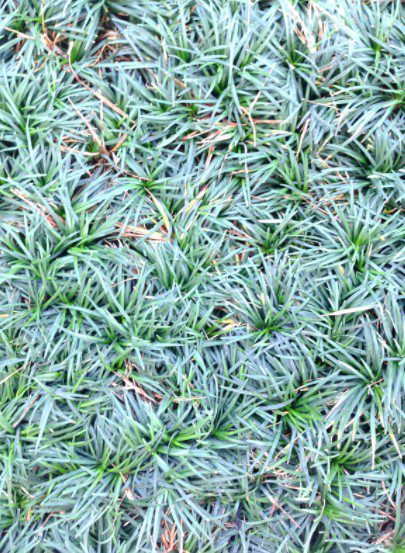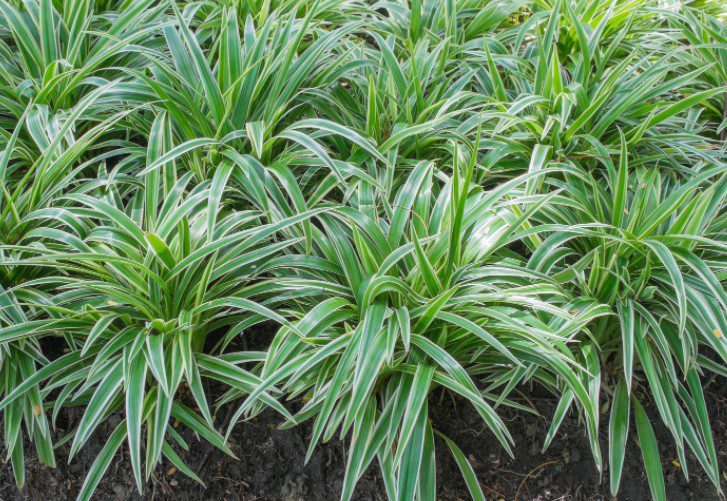Mondo Grass Vs Liriope
The main difference between Mondo grass and Liriope is its size. Mondo grass is dwarfish, whereas Liriope ranges from 12 to 24 inches in height; Mondo Grass, on the other hand, can reach anywhere from 6 to 12 inches. Also, Liriope foliage is more distinct with broader leaves.
Liriope grass is also called monkey grass. It is an evergreen perennial and makes a good groundcover or standalone grass-like plant.
Low-growing, dependable, green liriope and mondo fill the cracks between seasons.
Do you have Liriope muscari or Ophiopogon japonicus? Chances are you have one or the other if you live in the South.
Before you panic, thinking you may have contracted a disease from mosquitoes or an awful foot fungus, relax. These horrible-sounding names are two of the most common ground covers in landscaping.
Both have been used to edge driveways, sidewalks, and flowerbeds for years. Because they spread and are almost impossible to kill, they are often given away as pass-along plants.
Mondo Grass vs Liriope Details
Many people refer to both plants as monkey grass.
Liriope muscari ranges from 12 to 24 inches in height. When not called monkey grass, it’s also known as lilyturf or simply liriope. `Big Blue’ is the most popular and available selection.
The leaves are 1/2 to 3/4 inches wide. Liriope is usually dark green, but some selections, such as `Silvery Sunproof ‘ and `John Burch,’ have striped white or yellow leaves. Those selections tend to do better in sunny locations.
Evergreen Giant’ grows tall, usually 2 to 3 feet in height. It makes an excellent foundation for planting against the house under low windows. It isn’t as cold tolerant as other selections and is best suited for the Coastal and Tropical South.
Liriope spicata, sometimes called creeping liriope, has soft narrow foliage. Because its foliage is not stiff, it forms a loose mound. It isn’t recommended as an edging plant because it spreads aggressively and quickly grows into turf areas and flowerbeds.
It works well in extensive beds as a ground cover, where weeds have difficulty competing with it.
Liriope thrives in moist, fertile, well-drained soil and will take sun or shade. Roots, known as stolons, move underground, allowing the plants to spread. More famous for its foliage, liriope does have attractive summer flowers.
‘Majestic’ has the showiest, producing spikes of purple that fan out at the top of plants. Liriope blooms are usually violet in color, but `Monroe’s White’ has cream-colored flowers.
Ophiopogon japonicus, commonly referred to as mondo grass or mondo, is similar to liriope but much smaller, growing 6 to 12 inches tall with /4-inch-wide leaves. Its fine texture makes it a good ground cover in tight spots.

Growing Mondo Grass
Mondo grass is not recommended for full sun locations because of leaf burn. A little shade allows it to retain a deep blue-green color. `Silver Mist is a variegated form with green-and-white leaf blades.
There is also black mondo grass (0. japonicus ‘Nigrescens’), which has very dark foliage. This selection is more of a specimen plant and is slow to establish itself. Dwarf mondo (there are several dwarf selections) is tiny, growing only 3 inches tall.
Many times dwarf mondo is used in cracks and crevices of walkways. Its low profile keeps it from interfering with your footing.
Mondo grass and liriope can suffer from cold damage during bad winters; foliage can turn brown and look rough.
You can run a lawnmower set on its highest setting or a string trimmer over them in late February to remove discolored foliage before new growth appears. While trimming, don’t cut too close to the crowns of the plants, or you may hurt new vegetation.
Even when cold damage isn’t a problem, it helps cut these plants back every few years to rejuvenate tattered foliage and promote new growth.
These ground covers are good for more than just edging. They make a lovely sweep of green in the landscape and can be used as a low-maintenance lawn substitute. They excel under trees where many turf types of grass struggle.
Planted on steep banks, they help hold the soil and prevent erosion. Drought tolerant and rarely bothered by pests, they also look good in pots, either planted alone or in a mix.
If you already have one of these ground covers and would like to divide it, don’t worry. Liriope and mondo grass can easily be lifted, separated, and planted in other locations. Or you can buy them in flats or small pots.
Buying lots of small pots may seem expensive, but remember, you can divide them and get several sprigs from one pot if you have to buy your plants. Use a sharp hatchet or knife to separate tight, root-bound clumps, then cut off the bottom half of the roots with clippers.
This will not harm the divisions but will promote new root growth.
Mondo Grass Care
Space liriope 8 to 10 inches apart and mondo grass 4 to 6 inches apart. Extensive plantings should be put out in a gridlike pattern. If the soil is loose and you water and fertilize periodically, they should mesh tightly in a couple of years.
Mulch new plantings with finely shredded bark. Bark keeps weeds out and moisture in. It also allows stolons to move under the mulch so plants can spread.
Try one of these can’t-miss ground covers. Don’t limit them to just edging sidewalks and driveways.
Plant them en masse or where your grass won’t grow. You have nothing to lose-they thrive on neglect.
Mondo Grass Plant Profile
- Scientific name: Ophiopogon japonicus.
- Growth habit: An evergreen perennial in the lily family with 1/4- inch-wide, upright, straplike, dark green leaves originating from buds near ground level and growing to 12 inches tall.
- Light: Shady to filtered-sun areas.
- Water needs: Drought tolerant; keep new plantings moist until roots grow into the surrounding soil—after that, water every 10 to 14 days during drought.
- Feedings: Use a garden fertilizer once in March and June to spur growth.
- Propagation: Start new plants by dividing older established clumps.
- Ease of culture: Easy.
- Hardiness: Hardy.
- Major problems: Plantings are usually pest-free but can develop root rot if overwatered or planted in poorly drained soils. Even though it’s often called grass, this lily relative is damaged by foot traffic.
- Pruning needs: Mondo grass grows slowly but can eventually encroach upon other nearby plantings. Dig out clumps and relocate to keep the plants in bounds.
- Uses: Gardeners needing a carefree ground cover should consider mondo grass as turf replacement in shady locations. Also called monkey grass, dwarf lilyturf, and border grass, plantings make excellent low edging along walkways and near patios.
Mondo grass produces short spikes of lavender or white blooms usually hidden among the foliage from May through July. Plants can be used in container gardens and Oriental landscape designs.
Liriope Plant Profile
- Scientific Name:Liriope muscari
- Growth habit: An evergreen ground cover with lilylike upright to arching leaves growing from the ground to 2 feet tall.
- Light: Plant in full sun to shady locations.
- Water needed: Drought-tolerant; usually survives with seasonal rains.
- Feedings: Apply a balanced fertilizer once in March, June and October.
- Propagation: Start new plantings by dividing older clumps.
- Ease of culture: Easy.
- Hardiness: Tender.
- Use: One of Florida’s most popular and durable ground covers with numerous varieties. Space plants a foot apart where grass won’t grow or used as a border near taller shrubs.
Plantings produce pink, blue, white, or purple spikes of flowers among the foliage from July through September.





























